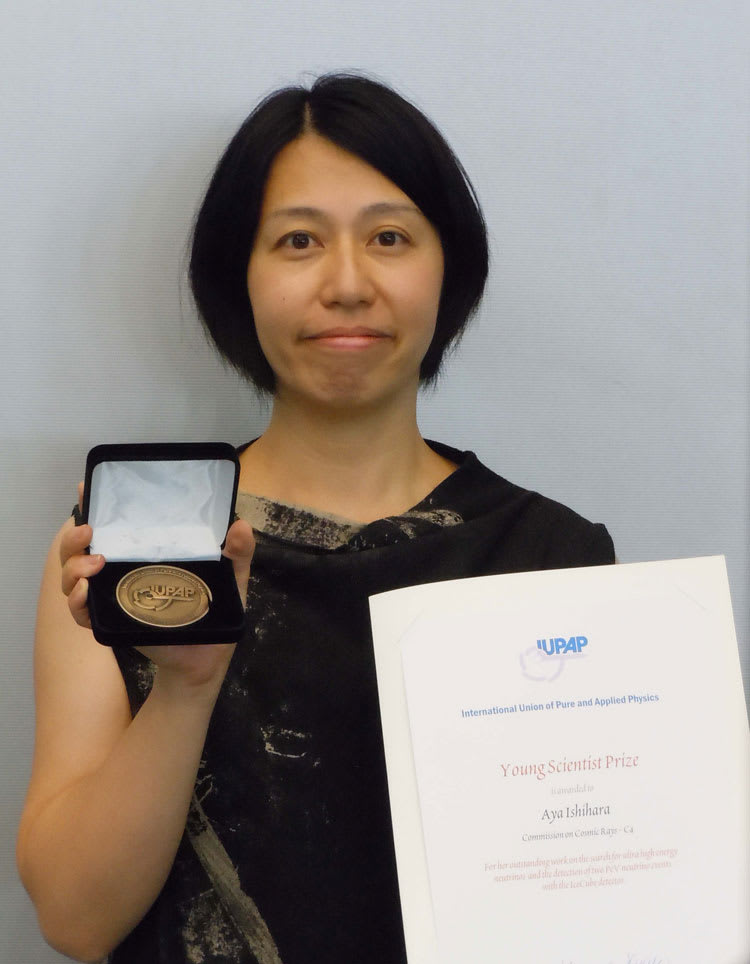
On July 02, 2013, at the opening session of the International Cosmic Ray Conference held this year in Rio de Janerio, Brazil, Aya Ishihara of Chiba University, Japan, received an International Union of Pure and Applied Physics Young Scientist award for her discovery of two high-energy neutrino events. She is the first winner from the field of neutrino astrophysics recognized by the cosmic ray physics commission.
“It is an honor to be receiving such an award,” said Ishihara. “Looking through so much data, it was unexpected and very exciting, seeing those two high-energy neutrinos. It was a moment everyone hopes for in their career.”
Ishihara, who serves as one of the coordinators for the IceCube Diffuse, Extreme High Energy, and Atmospheric Neutrinos working group, has long focused on the detection of extremely high-energy neutrinos. She completed her PhD at the University of Texas at Austin and was a postdoc working with IceCube at the University of Wisconsin–Madison before accepting a position at Chiba.
“As a student, I was very interested in astronomy, especially the things we know very little about. Studying neutrinos is one way to understand better what is happening in the Universe,” says Ishihara. Working with data from the IceCube detector, which is optimized to see particles at high energies, allows her to pursue her research interests and explore the big questions that led her toward a career in astrophysics.
Details on the two PeV neutrino events were recently published in Physical Review Letters. The find spurred additional analysis within the collaboration, and a follow-up analysis has revealed a number of high-energy neutrinos.
“With energies in the PeV range and the fact that both neutrino events occurred within the detector, it is unlikely that they were created in the atmosphere. Still, with just two events, the likelihood that they are cosmic neutrinos is only 2.8 sigma. So the results are not conclusive but provide insight on how to expand the search for high-energy neutrinos with IceCube,” Ishihara explained.